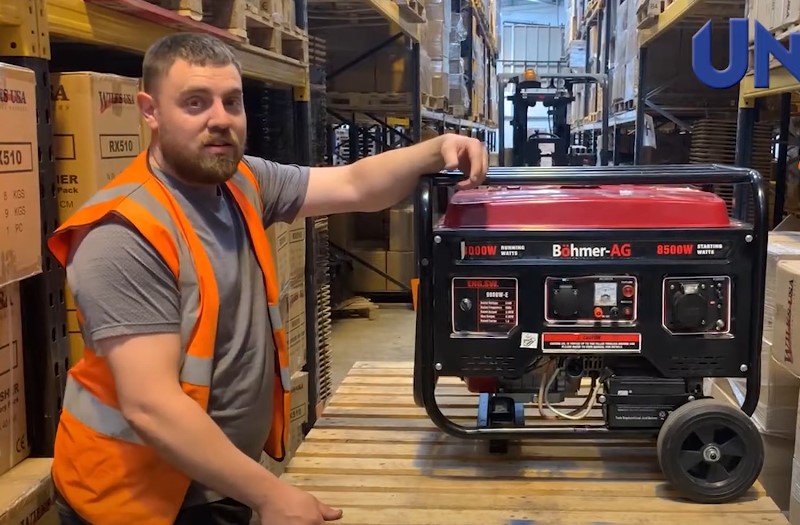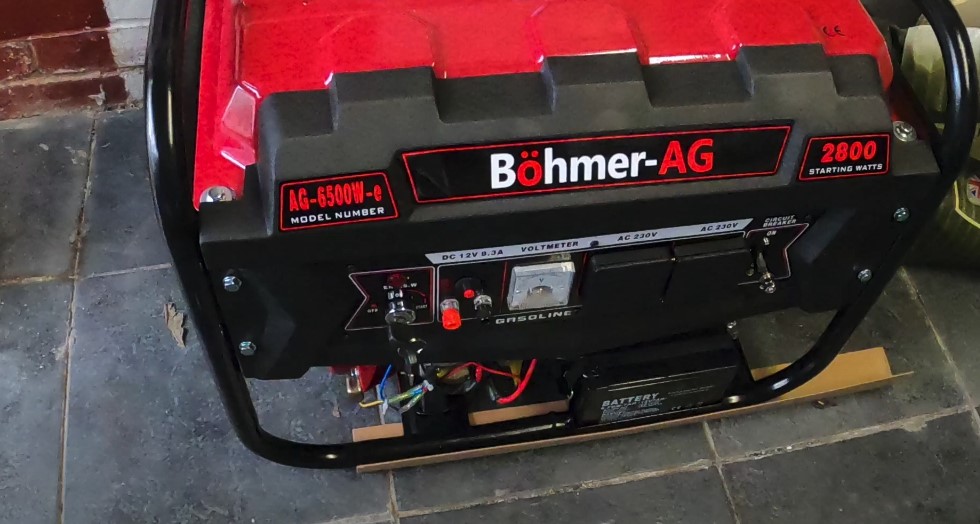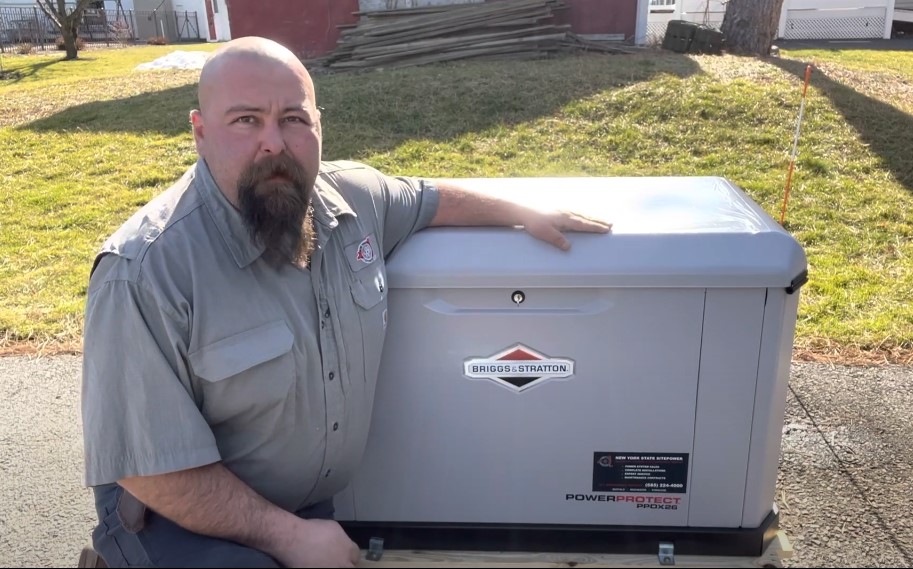Physical Address
304 North Cardinal St.
Dorchester Center, MA 02124
Physical Address
304 North Cardinal St.
Dorchester Center, MA 02124

Owning a Bohmer generator can save the day during power outages, but even reliable machines face hiccups.
From starting issues to inconsistent power output, Bohmer Generator Problems can be frustrating if you’re unprepared.
Thankfully, most issues have quick fixes that don’t require expert skills. Here, we’ll uncover 10 common problems and guide you to resolve them easily.

Bohmer generators are reliable, but like any machine, they can run into trouble.
Common problems include difficulty starting, low power output, or strange noises.
Don’t stress, most of these issues are easy to fix with quick checks like inspecting the fuel, spark plug, or filters!
The most common reasons your generator refuses to start include an empty fuel tank, stale gasoline that’s been sitting too long, a clogged fuel filter, or a dead battery.
Old fuel loses its combustibility over time, especially if it contains ethanol.
A dirty spark plug can also prevent proper ignition, while low engine oil levels trigger safety shutoffs in modern generators.
Start by checking your fuel level and adding fresh gasoline if needed. Replace any fuel that’s been sitting for more than three months.
Clean or replace the spark plug, and ensure the air filter isn’t clogged with dirt or debris.
Check the oil level and top it off if necessary. If your generator has a battery, test its charge and replace it if dead.
Read Also: 10 Briggs & Stratton Standby Generator Problems (With Easy Fixes)

A partially blocked fuel line restricts gasoline flow to the engine, causing it to run briefly before dying.
Carburetor problems from old fuel deposits can also create this issue. Dirty air filters reduce airflow to the engine, while faulty fuel pumps fail to maintain consistent pressure.
The automatic choke might also be sticking in the wrong position.
Clean the carburetor thoroughly using carburetor cleaner spray and remove any fuel deposits. Replace the fuel filter and check all fuel lines for blockages or kinks.
Clean or replace the air filter to ensure proper airflow. If the problem persists, adjust or clean the choke mechanism, and consider having the fuel pump inspected by a technician.
Overloading the generator beyond its rated capacity is the primary cause of power fluctuations.
Worn-out voltage regulators fail to maintain steady output levels. Loose electrical connections create resistance and voltage drops.
Carbon buildup on the alternator affects power generation, while damaged windings in the generator’s coils reduce overall output capacity.
Calculate your total power needs and ensure they don’t exceed the generator’s capacity. Remove some loads if you’re drawing too much power.
Tighten all electrical connections and clean any corrosion from terminals. Have the voltage regulator tested and replaced if faulty.
Clean carbon deposits from the alternator and check for any visible damage to the windings.
Loose mounting bolts allow the generator to shake excessively during operation. Worn engine mounts no longer absorb vibrations properly.
Damaged or unbalanced engine components create irregular movement. Loose panels and covers rattle against the frame.
A bent or damaged cooling fan can cause wobbling and noise during operation.
Inspect and tighten all mounting bolts, brackets, and fasteners throughout the generator. Replace worn engine mounts with new ones designed for your specific model.
Check the cooling fan for damage and replace it if bent or cracked. Secure any loose panels or covers with appropriate hardware.
If internal engine components seem damaged, consult a professional technician.
Blocked air intake screens prevent cool air from reaching the engine. Low coolant levels in liquid-cooled models reduce heat dissipation.
Dirty cooling fins accumulate debris that insulates heat instead of dissipating it. Faulty thermostats fail to regulate engine temperature properly.
Operating the generator in extremely hot weather without adequate ventilation exacerbates all these problems.
Clean all air intake screens and cooling fins with compressed air or a soft brush. Check coolant levels and top off with the manufacturer’s recommended fluid.
Ensure proper ventilation around the generator with at least three feet of clearance on all sides.
Replace a faulty thermostat if coolant levels are adequate but overheating continues. Move the generator to a shaded area during hot weather operation.
Water contamination in fuel tanks causes corrosion and engine performance issues. Clogged fuel injectors restrict proper fuel delivery to the combustion chamber.
Gum and varnish deposits from old gasoline coat fuel system components. Dirty fuel tanks accumulate sediment that blocks filters and lines.
Faulty fuel pumps fail to maintain adequate pressure for proper engine operation.
Drain contaminated fuel completely and refill with fresh gasoline. Add a fuel stabilizer to prevent future degradation during storage.
Clean or replace fuel injectors using appropriate cleaning solutions. Remove and clean the fuel tank thoroughly, replacing any damaged components.
Install a new fuel filter and check all fuel lines for cracks or blockages that might allow air into the system.
Corroded battery terminals create poor connections and starting problems. Faulty charging systems fail to maintain battery power during operation.
Blown fuses interrupt power flow to essential systems. Damaged wiring harnesses can cause shorts or open circuits.
Worn brushes in the alternator reduce electrical output and create sparking inside the unit.
Clean battery terminals with baking soda and water, then apply petroleum jelly to prevent future corrosion.
Test the charging system with a multimeter and replace faulty components.
Check all fuses and replace any that have blown with the correct amperage rating. Inspect wiring for damage and repair or replace as needed using appropriate gauge wire and connectors.
Low oil levels from leaks or normal consumption trigger automatic shutdown systems. Dirty oil loses its lubricating properties and can damage engine components.
Oil leaks from worn gaskets or seals create mess and reduce lubrication. Clogged oil filters restrict flow and reduce pressure.
Using the wrong oil viscosity affects engine performance and protection in different temperature conditions.
Check oil levels regularly and maintain them between minimum and maximum marks on the dipstick.
Change oil and filters according to the manufacturer’s maintenance schedule. Identify and repair oil leaks by replacing worn gaskets and seals.
Use only the oil viscosity recommended in your owner’s manual for your climate conditions. Monitor oil consumption patterns to identify potential internal engine wear.
Perform basic maintenance every 100 hours of operation or annually, whichever comes first. This includes oil changes, filter replacements, and spark plug inspection.
Automatic shutdowns usually indicate low oil levels, overheating, or overloading. Check these three issues first before investigating other potential causes.
Use only the oil grade specified in your owner’s manual. Automotive oil may not provide adequate protection for small engine applications and operating conditions.
Fresh gasoline with stabilizer can be stored for up to 12 months. Without stabilizer, fuel begins degrading after 30-90 days and should be replaced.
Check all circuit breakers and fuses first. If they’re fine, the problem likely involves the alternator, voltage regulator, or internal wiring requiring professional diagnosis.
Regular maintenance and prompt attention to problems will keep your Bohmer generator reliable for years to come.
Most issues stem from neglect rather than manufacturing defects, making prevention your best strategy.
Create a maintenance schedule that includes regular oil changes, filter replacements, and fuel system care.